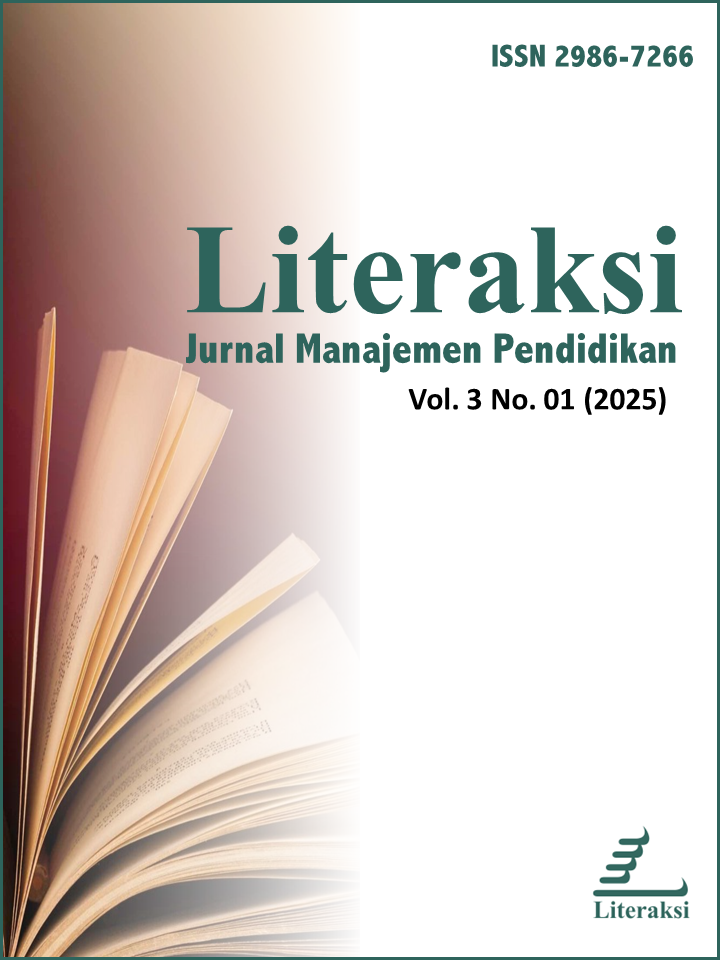The Impact of Critical Thinking and Teaching Methods on Students' Writing Ability
DOI:
https://doi.org/10.70508/literaksi.v3i01.786Keywords:
Critical, leader, paradigm, reflection, trailAbstract
Abstract – In today's global culture, writing—once thought to be the domain of the educated—has evolved into a critical ability for people from all walks of life. One of the most challenging language production tasks is writing, and both professional and amateur writers routinely lament the process' complexity and difficulty. Students need to be able to think critically to generate an idea. The aim of this study was to ascertain how instructional methods and critical thinking interact to affect students' writing abilities. An experimental research design was adopted. There were 80 pupils in the sample, 40 from MAN 1 Kabupaten Tangerang's experiment class and 40 from MAN 2 Tangerang's control class. The sampling method that was employed. The findings of the validity and reliability tests of the writing ability and critical thinking (30 items) were tested using research instruments. Two-way ANOVA analysis was the test utilized, and the outcome revealed: (1) At State Islamic High School 1 Tangerang Regency, educational methods have a major impact on pupils' writing abilities. It is demonstrated by the values of Fo = 77,449 and sig 0,000 < 0,05. (2) At State Islamic High School 2 Tangerang, pupils' writing abilities are significantly impacted by critical thinking. The values of sig 0,000 < 0,05 and Fo = 51,791 demonstrate this. (3) Do teaching methods and critical thinking have any discernible interacting effects on students' writing abilities at State Islamic High School in Tangerang?
Downloads
References
REFERENCES
Bellanca, (2007). a Guide to Graphic Organizer. California:Corwin Press.
Bromley, K., DeVitis, L. I. and Modlo, M. (1999). 50 Graphic Organizers for Reading, Writing & More. New York: Scholastic Professional Books.
Brown, D. (2001) Teaching by Principles: An Interactive Approach to Language Pedagogy, Second Edition. New York: Pearson Education
Butterworth, J. Thwaites.n (2013) Thinking Skill: Critical Thinking And Problem Solving. Cambridge: Cambridge University Press.
Ciascai, L. (2009). Using Graphic Organizers in Intercultural Education. Acta Didactica Nepocensia, Cottrell (2005). Critical Thinking Skill. New York: Palgrave Macmilan.
Davies, M & Barnett (2015) The Palgrave Handbook for Critical Thinking in Higher Education. New York:Palgrave Macmillan.
Dye, G. (2000). Graphic Organizers to the Rescue! Helping Students Link—and Remember— Information.
London:Teaching Exceptional Children.
Ellis, E. (2004). What’s the big deal about GO? Retrieved on January 23rd, 2010,http://www.graphicorganizers.com/images/stories/ pdf/Q&AGraphicOrganizers.pd
Ellwood, and Davis (2010) International Mindedness: a Professional Development Handbook for International Schools. London: Optimus Eucation
Facione, P. A., Facione, N. C., & Giancarlo, C. A. E (2000). The California Critical Thinking Disposition Inventory. Millbrae. California: California Academic Press
Harmer, Jeremy. (2004). How to Teach Writing.Kuala Lumpur: Longman
Hibbard, K. M., & Wagner, E. A. (2003). Assessing and Teaching Reading Comprehension and Writing K-3 (Vol.
. New York: Eye on Education.
Housel, Debra J, Content Area Lesson Using Graphic Organizer. California. Teacher Created Resource.
Jiang, X., & Grabe, W. (2007). Graphic organizers in reading instruction: Research findings and issues. Reading in a Foreign Language, 19, 34–55
Knapp, Watkins (2005) Genre, Text, And Grammar. Sydney: UNSW Press.
Marzano, Pickering, Pollock,(2001), Classroom Instruction that works, Alexandria, Association for Supervision and Curriculum Development.
Mckim, Robert. (1980). Experience in Visual Thinking. California: Cole Publishing Company. McPeck, (2015). Critical Thinking and Education. Britain: Routledge
Miller, and Babcock (1996). Critical Thinking Applied to Nursing. Michigan: Mosby
Paul, R. & Elder, L. (2001).The miniature guide to critical thinking: Concepts and tools. California: Foundation for Critical Thinking
Perles, Keren. (2012) Types of Graphic Organizer and Tips of Using Them with Your Students. Bright Hub Inc.
Retrieved on October, 2012 from http//www.ePal.com/join.
Richard, Renandya (2002). Methodology In Language Teaching. New York, Cambridge University Press. Rowson, J. (2012) The Power of Curiosity.United Kingdom: RSA Social Brain Center.
Singh, YK. Instructional Technology in Education. Ciang Mai: APH Publishing
Slavin, R. E. (2011). Educational Psychology: Theory and Practice. New York: Pearson.
Starkey, Lauren (2004). Critical Thinking Skill Success in 20 Minutes a Day. New York: Learning Express. Vallis. (2010). Reason to Write: Applying Critical Thinking to Academic Writing. Charlotte: Kona Publishing and
Media Group.
Vekiri, I. (2002). What is the value of graphical displays in learning? Educational Psychology Review, 14, 261- 312.
Weigle. ( 2002) Assessing Writing. Cambridge: Cambridge University Press.
William, R Bruce. (2015). Higher Order Thinking Skill. New York: First SKyhorse Publishing.
Wills. (2008). The Theoretical and Empirical Basis for Graphic Organizer Instruction. Alabama: The University of Alabama.
Additional Files
Published
How to Cite
Issue
Section
License
Copyright (c) 2025 Eva Agistiawati

This work is licensed under a Creative Commons Attribution-NonCommercial-ShareAlike 4.0 International License.
CC Attribution-NonCommercial-ShareAlike 4.0




